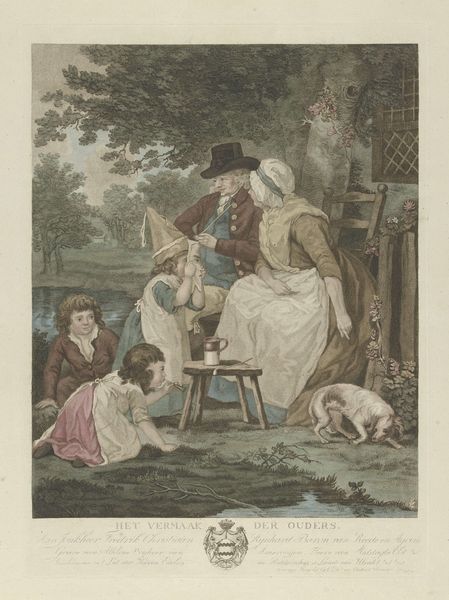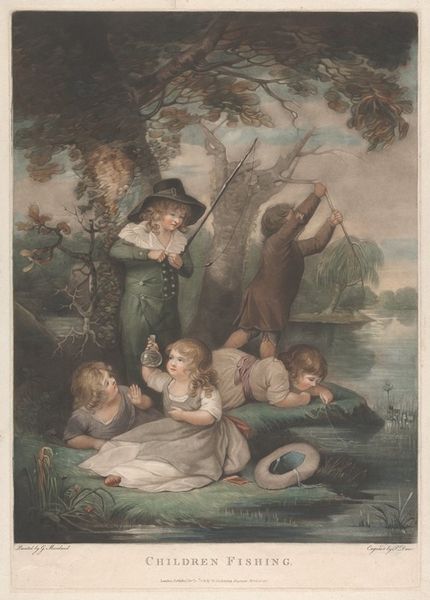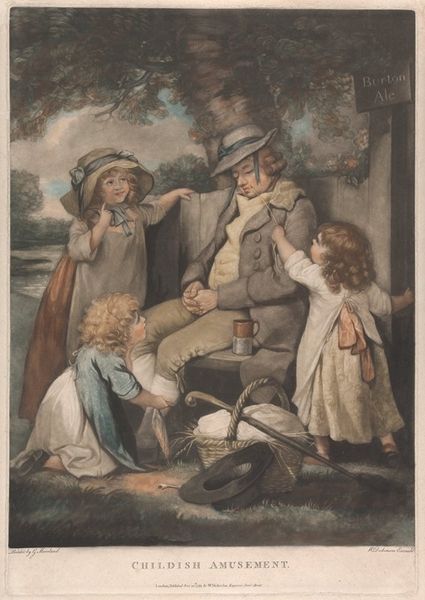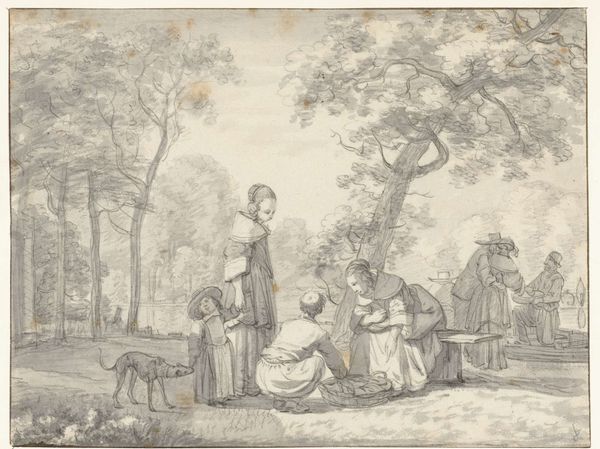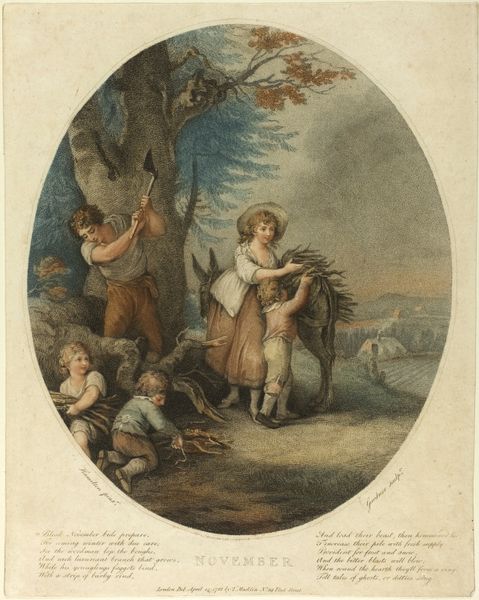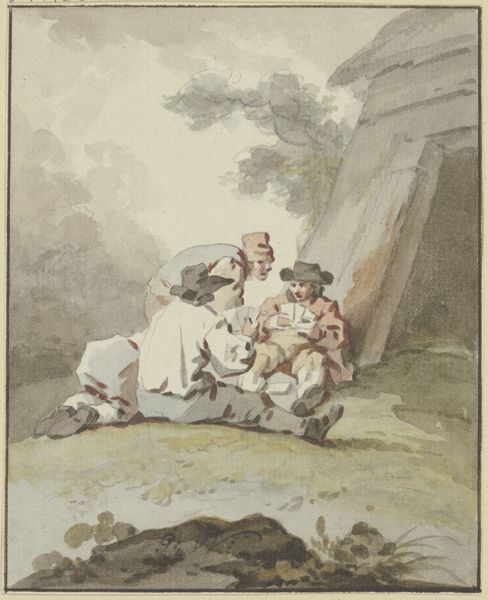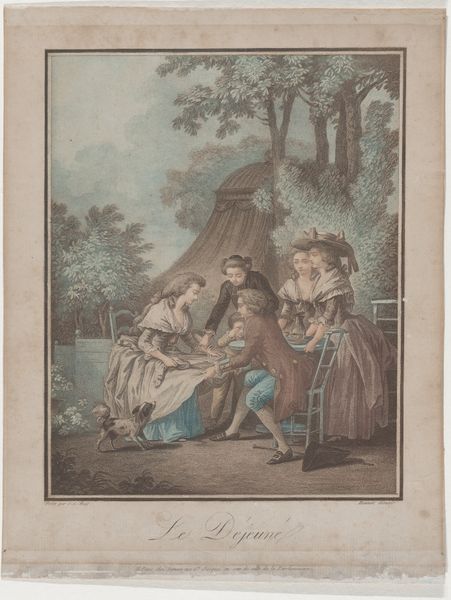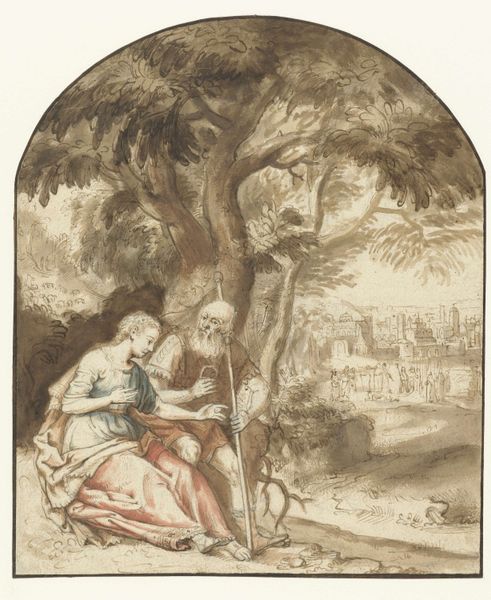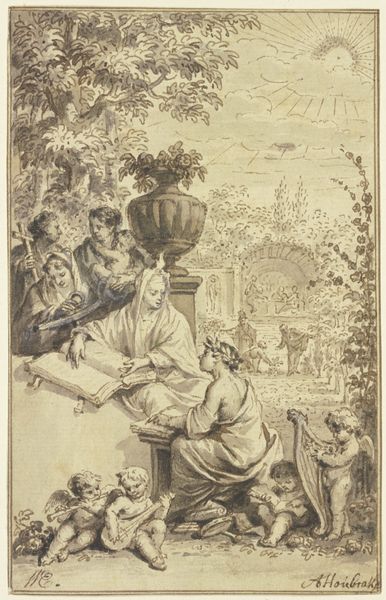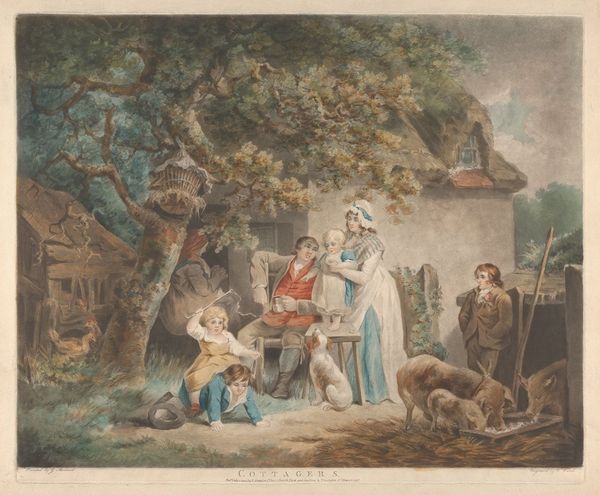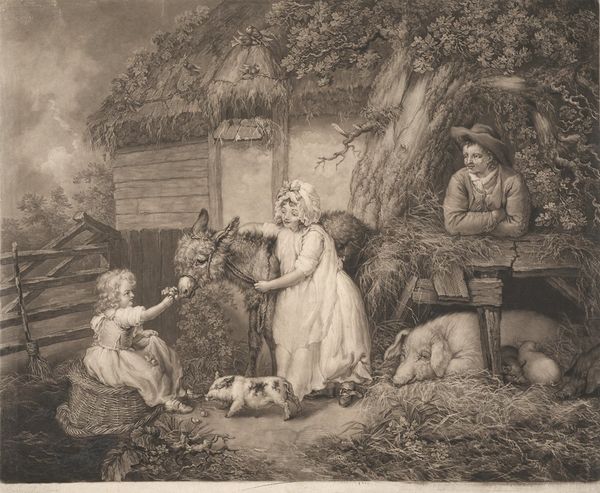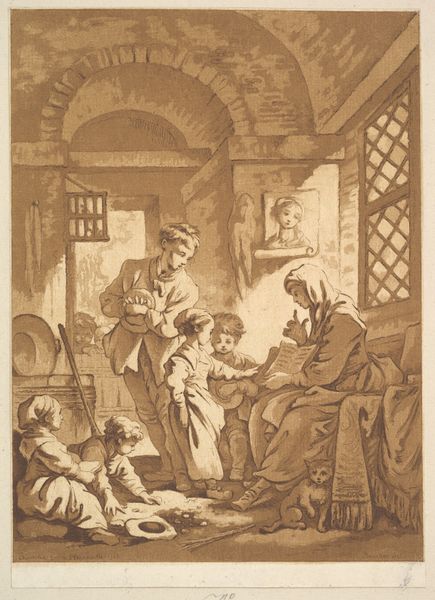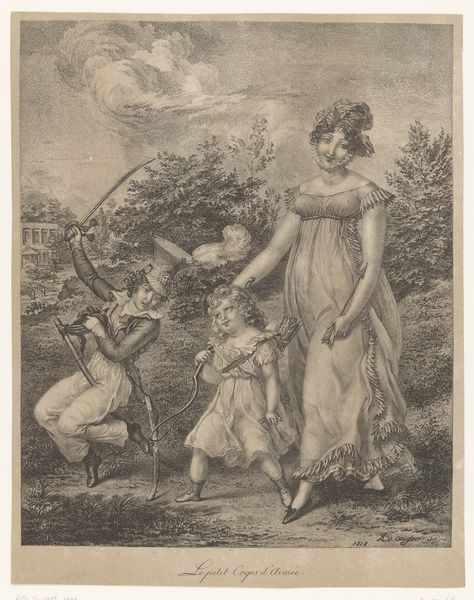
painting, print, engraving
#
portrait
#
figurative
#
painting
# print
#
landscape
#
romanticism
#
watercolour illustration
#
genre-painting
#
engraving
#
watercolor
Copyright: Public Domain: Artvee
Editor: This is George Morland’s “Youth Diverting Age,” a print from 1789. I’m immediately struck by the depiction of family life; there's a real sense of warmth and playful interaction happening here, but I wonder how that’s situated in its time? What do you see in this piece? Curator: It’s interesting that you picked up on the family dynamic. Looking at this through a social lens, consider the era. This was a period of rigid class structures and evolving notions of childhood and family roles. Morland often depicted rural life, but not without a critical eye. The "diversion" could be seen as a gentle commentary on the power dynamics and social expectations of age and youth. Editor: So, you're suggesting that the playful scene could be more than just that? Curator: Precisely. How might we interpret the power dynamic implied in the title itself? "Youth Diverting Age" suggests agency and subversion. Are the children simply amusing the elders, or are they actively challenging the established order, perhaps even mocking it in a way that’s hidden to the older figures, and maybe, to the viewer who isn't from the same class. Does the setting, with the elders seemingly inside the fence with an open gate, also suggest confinement or the potential for freedom? Editor: That's a fascinating point. I hadn't considered the element of subtle critique or rebellion. It reframes how I perceive the piece entirely. The fence, yes. I'd assumed it marked ownership but it has now come to mean much more to me than first impressions had assumed. Curator: Exactly. It encourages us to look deeper, to question the surface level sentimentality, and consider the complexities of social relations within the artwork and within the broader historical context. This also tells me something about the patron/audience of Morland's work at the time, too, that maybe it also reflected aspirations. Editor: That gives me a completely new appreciation for the print! I now have questions, and more questions, about 18th century art and the commentary embedded within, particularly the use of domestic settings to present themes like agency and hierarchy! Thank you. Curator: Indeed! By engaging with art through these critical frameworks, we move beyond mere observation and delve into a deeper understanding of ourselves, our history, and the power of artistic expression.
Comments
No comments
Be the first to comment and join the conversation on the ultimate creative platform.
